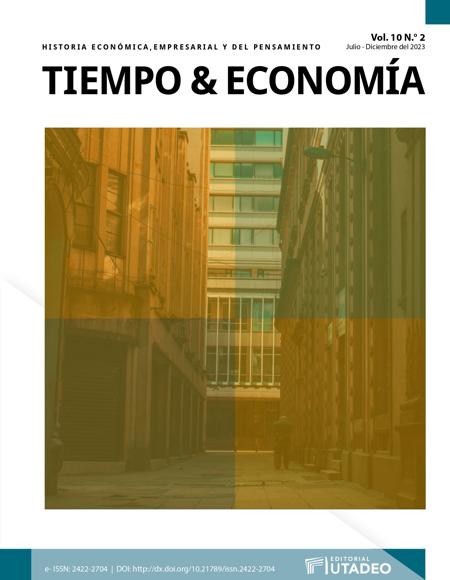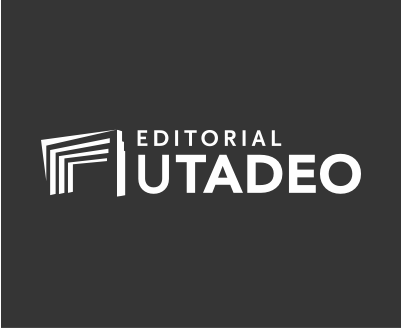
Esta obra está bajo una licencia internacional Creative Commons Atribución-NoComercial-CompartirIgual 4.0.
Esta obra está bajo una licencia internacional Creative Commons Atribución-NoComercial-CompartirIgual 4.0.
Resumen
This study examines the evolution of the composition of the boards of the central banks from Bolivia, Chile, Colombia, Ecuador, and Peru throughout the 20th century. Although the initial boards of those central banks were similar, they included representatives from different institutions, such as labor unions, bankers, business associations, and governments. Over eighty years, governments implemented several reforms that changed the composition of the boards , increasing the weight of business associations, while rapidly decreasing the participation of labor unions and bankers. In the 1960s and 1970s, government representatives took over the boards until the independence reforms of the late 1980s and early 1990s. Despite facing political turmoil and undergoing several restructurings, these five “Kemmerer” central banks evolved in parallel up to the new century.
Citas
Álvarez, A., Guiot-Isaac, A., & Hurtado, J. (2020). The Quarrel of Policy Advisers That Became Development Experts: Currie and Hirschman in Colombia. History of Political Economy; 52 (2), 275–306. https://doi.org/10.1215/00182702-8173.
Avella Gómez, M. (2014). La independencia de la banca central en Colombia desde 1923. Aspectos institucionales. Revista de Economía Institucional, 16(30), 171-214.
Banco Central del Ecuador. (2002). Cronología1927 - 2002. Memoria Anual 2002. Banco Central del Ecuador.
Bignon, V., Flandreau, M., & Ugolini, S. (2012). Bagehot for Beginners: The Making of Lender of Last Resort Operations in the Mid-Nineteenth Century. The Economic History Review, 65(2), 580-608. https://doi.org/10.1111/j.1468-0289.2011.00606.x
Blanchard, O., & Summers, L. (2017). Rethinking Stabilization Policy Ecolution or Revolution. NBER Working Paper 24179 . https://doi.org/10.3386/w24179
Bordo, M., & Siklos, P. (2017). Central banks: Evolution and innovation in historical perspective. NBER Working Paper 23847. https://doi.org/10.3386/w23847
Borio, C. (2014). Central Banking Post-Crisis: What Compass for Uncharted Waters? En C. Goodhart, D. Gabor, J. Vestergaard, & I. Erturk, Central Banking at a Crossroads (191-217). Anthem Press.
Brimmer, A. (1971). Central Banking and Economic Development: The Record of Innovation. Journal of Money, Credit and Banking, 3(4), 780-792. https://doi.org/10.2307/1991416
Capie, F. (2016). Central Banking. En Y. Cassis, C. Shenk, & R. Grossman, The Oxford Handbook of Banking and Financial History. https://doi.org/10.1093/oxfordhb/9780199658626.013.17
Carrasco, C. (2009). Carrasco, Banco Central de Chile 1925-1964: una historia institucional. Banco Central de Chile.
Conti-Brown, P. (2018). The Power and Independence of the Federal Reserve. Princeton University Press. https://doi.org/10.1515/9781400888412
Cueva, S., & Díaz, J. (2022). The History of Ecuador. En J. P. Timothy J. Kehoe, A Monetary and Fiscal History of Latin America, 1960–2017. U of Minnesota Press.
Dow, S. (2014). The Relationship Between Central Banks and Governments: What are Central Banks for? En C. Goodhart, D. Gabor, J. Vestergaard, & I. Erturk, Central Banking at a Crossroads ( 229-243). Anthem Press.
Drake, P. (1989). The Money Doctor in the Andes. Duke University Press. https://doi.org/10.2307/j.ctv11cw52m
Drake, P. (2013). Kemmerer y la creación de los bancos centrales en los países andinos. En J. Uribe, Banco de la República: 90 años de la banca central en Colombia (págs. 18-31, DOI: 20.500.12134/9614). Banco de la República.
Epstein, G. (2019). Central Banks as Agents of Economic Development. En G. Epstein, The Poliical Economy of Central Bankin (95-113). Northampton: Edward Elgar Publishing. https://doi.org/10.4337/9781788978415.00025
Flores Zendejas, J. (2021). Money Doctors and Latin American Central Banks at the Onset of the Great Depression. Journal of Latin American Studies, 53(3), 429-463. https://doi.org/10.1017/S0022216X21000444
Gómez Betancourt, R. (2010). Edwin Walter Kemmerer and the Origins of the FED. Journal of the History of Economic Thought, 32(4), 445-470, https://doi.org/10.1017/S1053837210000441.
Gómez Betancourt, R. (2022). The Political Economy of a Moder Missionary: E. W. Kemmerer in the Philippines. History of Political Economy; 54 (3), 483-505. doi: https://doi.org/10.1215/00182702-9779628.
Goodhart, C. (2010). The changing role of central banks. BIS Working Papers No. 326. https://doi.org/10.2139/ssrn.1717776
Goodhart, C. (2016). Lessons Learnt from the Sub-Prime Crisis. En M. Bordo, O. Eitrheim, M. Flandreau, & J. Qvigstad, Central banks at a crossroads (págs. 610-626). New York: Cambridge University Press. https://doi.org/10.1017/CBO9781316570401.015
Grabel, I. (2000). The Political Economy of Policy Credibility: the New-clasical macroeconomics and the remaking of emergien economies. Cambridge Journal of Economics, 24(1), 1-19. https://doi.org/10.1093/cje/24.1.1
Haldane, A., & Qvigstad, J. (2016). The Evolution of Central Banks: A practitioner’s Perspective. En M. Bordo, E. Oyvind, M. Flandreau, & M. Qvigstad, Central Banks at a Crossroad: What Can We Learn from History (pág. Chapter 16). New York: Cambridge University Press. https://doi.org/10.1017/CBO9781316570401.016
Hampe, T. (1995). El Banco Central de Reserva y la economía peruana (1922–1980). Lima: Banco Central de Reserva del Perú.
Helleiner, E. (2014). Forgotten Foundations of Bretton Woods International Development and the Making of the Postwar Order. Ithaca: Cornell University Press.
Ibañez Najar, J. E. (1990). Antecedentes legales de la creación del Banco de la República. En A. Meisel Roca, El Banco de la República: antecedentes evolución y estructura (194-237). Bogotá: Banco de la República.
Jácome, L. (2004). The Late 1990s Financial Crisis in Ecuador: Institutional Weaknesses, Fiscal Rigidities, and Financial Dollarization at Work . IMF Working Paper No. 04/12, SSRN: https://doi.org/10.5089/9781451842937.001
Jácome, L. (2015). Central Banking in Latin America: From the Gold Standard to the Golden Years. IMF Working Paper, 15/60. https://doi.org/10.5089/9781484303184.001
Jones, E., & Matthijs, M. (2019). Rethinking Central-Bank Independence. Journal of Democaracy, 30, 127-141. https://doi.org/10.1353/jod.2019.0030
Junguito, R. (2022). Los Extranjeros y la Política Fiscal de Colombia: Influencia de los gobiernos, organismos multilaterales, comités de acreedores, bancos internacionales, misiones internacionales, y expertos extranjeros. En publicación.
Kindleberger, C., & Aliber, R. (2015). Manias, Panics, and Crashes: A History of Financial Crises. Springer.
Luna Andrade, S. (2017). El problema de autonomía del Banco Central del Ecuador, 1927-1966 (Bachelor’s thesis,). Pontificia Universidad Católica del Ecuador.
Marcussen, M. (2005). Central Banks on the move. Journal of European Public Policy, 12(5), 903-923. https://doi.org/10.1080/13501760500161597
Martinelli, C., & Vega, M. (2022). Reformas Económicas y Génesis de la Inflación. En M. Vega, & L. F. Zegarra, HISTORIA DEL BANCO CENTRAL Y LA POLÍTICA MONETARIA DE PERÚ 2022 (199-). Lima: Banco Central de Reserva del Perú.
Monsalve, M., & Winkelried, D. (2022). Los inicios de la banca central en el Perú. En M. Vega, & L. F. Zegarra, HISTORIA DEL BANCO CENTRAL Y LA POLÍTICA MONETARIA DE PERÚ 2022 (45-84 ). Banco Central de Reserva del Perú.
Pérez-Caldentey, E., & Vernengo, M. (2020). The historical evolution of monetary policy in Latin America. En S. Battilossi, Y. Cassis, & K. Yago, Handbook of the History of Money and Currency (953-980). Singapore: Springer. https://doi.org/10.1007/978-981-13-0596-2_44
Sandilands, R. (2015). La Misión del Banco Mundial a Colombia de 1949, y las visiones opuestas de Lanclin Currie y Albert Hirschman. Revista de Economía Institucional, 17(32), 213-232. https://doi.org/10.18601/01245996.v17n32.07
Sastoque Ramírez, E. C. (2018). El papel de los banqueros en la construcción del Estado y la soberanía monetaria en Colombia (1980-1931). Bogotá: Universidad Externado de Colombia. https://doi.org/10.2307/j.ctv1ddctr0
Seidel, R. (1972). American Reformers Abroad: The Kemmerer Missions in South America, 1923-1931. The Journal of Economic History, 32(2), 520-545. https://doi.org/10.1017/S0022050700067231
Ugolini, S. (2011). What do we really know about the long-term evolution of central banking? Evidence from the past, insights for the present. Norges Bank Working paper 2011-15. https://doi.org/10.2139/ssrn.1963931
Ugolini, S. (2017). The Evolution of Central Banking Theory and History. London: Palgrave Studies in Economic History. https://doi.org/10.1057/978-1-137-48525-0
Uribe, J. D. (2012). La cooperación entre bancos centrales: una perspectiva lationamericana. Conferencia conmemorativa del 60 aniversario del CEMLA. La cooperación entre bancos centrales a principios del siglo XXI.
Wendschlag, M. (2018). Central Bankers in twelve countries between 1950 and 2000: The Making of a Global Elite. En Y. Cassis, & G. Telesca, Financial elites and European banking: Historical perspectives. (182-208). Oxford: Oxford University Press. https://doi.org/10.1093/oso/9780198782797.003.0009

 PDF (English)
PDF (English)
 FLIP
FLIP












